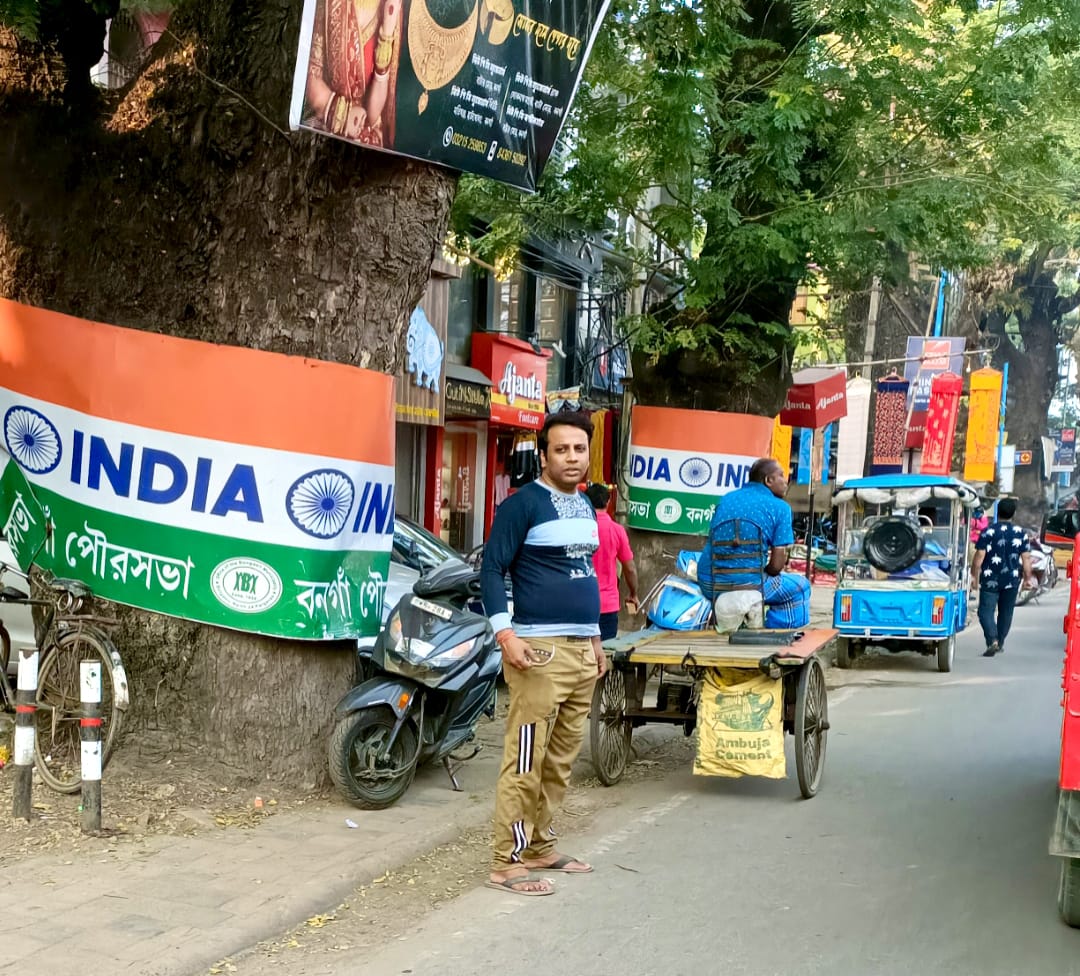As India Bans Land Route Garment Exports from Bangladesh, Who Pays the Price?
Bangaon (West Bengal): The sweeping shift in India’s trade policy with Bangladesh has sparked a growing economic crisis in West Bengal, where the state’s border districts have become the ground zero of a logistical and livelihood collapse.
The abrupt ban on land-port imports of ready-made garments (RMG) has brought logistical operations to a standstill, leaving border towns deserted and jeopardising the livelihoods of thousands of families who depend on cross-border commerce.
Effective May 2025, the Union government's new policy restricts Bangladeshi garments and processed goods from entering India via key land ports such as Petrapole, Hili, Mahadipur, Changrabandha and Fulbari, which are all crucial to West Bengal's border economy. All such imports must now be routed through the far-off Kolkata and Nhava Sheva seaports, bypassing Bengal's traditional rural trade routes.
At Petrapole alone, South Asia's largest land port and a hub for roughly 70% of India-Bangladesh land-based trade, daily truck movements dropped from 600-700 to less than 200 within a week, forcing many shopkeepers to shut down due to a complete lack of customers. An estimated 2,000-3,000 labourers who typically earn Rs 300-600 daily on piece-rate contracts are now faced with uncertainty.
For years, Samir Biswas earned his living loading and unloading goods at the Petrapole land port in West Bengal's North 24 Parganas. His daily income has plummeted dramatically in recent weeks.
“The situation doesn’t look like it’ll return to normal soon. We hear that things might change after elections in Bangladesh, but who knows what’ll happen here. I’m switching to driving an auto-rickshaw now – how long can I just wait?” says Biswas.
“It’s true that many poor people here will suffer due to the halt in land-based import-export. Transport is a major business in border areas, and the state government has already hurt that by introducing slot-booking policies. But I believe this pain must be accepted for the nation’s interest,” Ashok Kirtaniya, BJP MLA from Bangaon North, notes.
Nearly 70% of West Bengal's extensive cross-border logistics fleet, mostly owned by small transport operators, are dedicated to trade with Bangladesh. With daily truck movements at these vital land ports sharply reduced, an estimated 12,000 to 15,000 workers are on the verge of losing their primary source of income. This includes daily wage labourers, truck drivers, loaders and various ancillary service providers, all of whom relied on the consistent flow of goods across the border.
According to the Bangladesh Garment Manufacturers and Exporters Association (BGMEA), nearly 80% of Bangladesh’s exports to India pass through the Benapole land port, primarily consisting of apparel. Over the last 10 months, goods worth Rs 12,000 crore have been exported via land routes. The new restrictions have hurt the Bangladesh textile industry, as shipping via ports (instead of land routes) could take two weeks instead of three days, raising costs.

Jessore Road, heading towards the Bangladesh border in West Bengal. It is now known as NH112, part of Asian Highway-1. Photo: Joydeep Sarkar
“Bangladesh will suffer greater economic losses, but their weaving industry also depends on raw materials from India. With reduced demand, Indian producers will also cut back, leading to ripple effects. The loss of income for poor border workers will reduce local consumption, impacting the regional economy,” says economist Biswajit Haldar, associated with Visva-Bharati University, Santiniketan.
The traditional flow of textiles, where Indian cotton and yarn were sent to Bangladesh for garment production and then re-imported for India's mass market, has been disrupted with the new restrictions. With the Durga Puja season approaching (late September to early October 2025), retailers are concerned that demand will outstrip supply, leading to a shortage of affordable clothing in rural markets.
“Some of the affordable clothes found in our markets, even in major cities like Delhi and Mumbai, originated from Bangladesh. That entire segment will now take a hit,” laments Surendra Gupta, a cloth merchant in Kolkata’s Burrabazar.
“Goods from Bangladesh came at prices that poor people could afford. These clothes were a lifeline for low-income groups. They’re still available here, but a bit more expensive. Items like Bermuda shorts and cheap women's clothing used to come from there,” says Sheikh Sohel, a trader from Howrah Haat.
Bangladesh, the world's second-largest garment exporter, heavily depends on Indian land routes for its international shipments. The country annually exports an estimated USD 700 million in ready-made garments to India, with approximately 93% traditionally entering via land ports.
Garment manufacturers have voiced concerns about potential financial losses and requested a three-month delay in implementing the land port ban to allow for adjustment to the new logistics.
Translated by Aparna Bhattacharya.
This article went live on June third, two thousand twenty five, at thirty-nine minutes past two in the afternoon.The Wire is now on WhatsApp. Follow our channel for sharp analysis and opinions on the latest developments.




